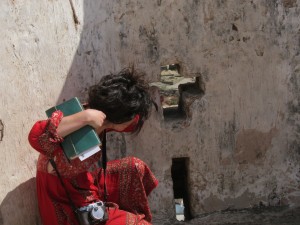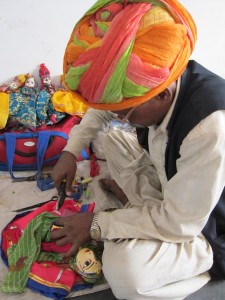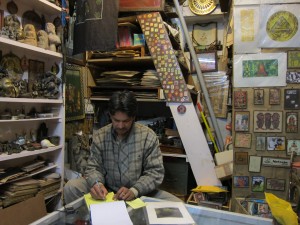Aesthetic Udaipur
I’ve been in Udaipur for two weeks. In two days I’m leaving, even though I’m sure I could happily stay on for longer. I told myself this would be the trip where I actually travel, rather than move and resettle, move and resettle, like I’ve done before. Still, if I’m so comfortable and entrenched here—and to be clear, I am quite comfortable and entrenched here—why am I going? It just feels like it’s time to go, if only so I can leave on a high note. I’m going to Bundi next, largely because Gabriella, an artist and new friend, told me she loved it there, and because I’m having a nice run with this accidental theme of visiting ruined temples, palaces, and forts.
I liked Gabriella immediately. She’s light on her feet and easy to be around. When we took a daytrip together, she dozed off in the car a few times and each time woke up laughing. She says yes to absolutely everyone who asks to take her photo, but makes them promise to send her a copy by email; she plans to make a photo album full of these captures of her and her photo-friends. And she loves India. Within ten minutes of meeting her, she told me she thinks of this 3-month trip as mere training for her next visit. (In my application for Glimpse, the travel writing fellowship I was later awarded, I wrote, “In the end I could say more about what I wanted from my next trip than what I’d gained, lost, or given in my first.”)
I only met Gabriella a few days ago and she has, sadly, already departed, but it still feels right to mention her first, I suppose because so much of my experience of Udaipur has been so much like her—artistic, cheerful, and effortless.
One day I met a puppet maker named Sarvaan and watched as he refitted the wood and cloth mechanisms that would allow the puppet, a dancing lady, to jut her hips from side to side. Her torso was wood; her “hips” were made from a tiny fabric pillow that hung like a porch swing from her waist.
Another day I met Madhu, an artist, painter, sculptor, repurposer, and collector, whose grandfather was the jewelry designer to the Maharaja and whose wife is (rather charmingly, I think) also named Madhu. One day we went to look at some pieces in the warehouse in his family compound in the back lanes of the old city. The warehouse is made up of two very full floors of old paintings, lithographs, school charts, sculptures, photos, brassware, pens, tin boxes, and postcards, and no doubt many other treasures I didn’t even notice. Object for object, there’s more to see here than in the City Palace Museum.
Madhu’s workshop is in the bottom floor of the compound’s oldest building. Here, it was clear, he allowed himself to be freer; I guessed this was not a space m
any customers were able to see. We entered through two dim rooms filled with hundreds of wooden frames. Beyond them, an open courtyard held bowls of dried out paint, Plaster of Paris molds, and eight copper Buddha heads that Madhu was in the process of manually oxidizing. The final three interconnected rooms held drafting tables, crumbling manuscripts covered in Hindi script, rubber casts of jewelry molds, a lightbox he’d built to project the image of some mustached prince from an old negative, a modern hologram of a Japanese woman next to a rose who oscillated between giving a coy gaze with pursed lips and winking over a white-toothed smile. Each space was so full Madhu said sometimes even he stumbles across some artifact he can’t remember ever seeing before.
I’m staying in Hanuman Ghat, just off the city’s famous Lake Pichola and a 10-minute walk from Madhu’s shop. I chose my guesthouse largely based on my room’s window seat and one orange wall, and its proximity to Millets of Mewar, a local health food restaurant. The guys who started Millets a few months ago, four friends my age, are lovely, and thus far so passionate that they aren’t fazed by how hard they’re working. I volunteered to help them build their website. Like the excessive number of prints, magnets, and vintage postcards I’ve purchased from Madhu, more than anything the website has been an excuse for me to idle a little longer and hear their stories.
I’ve never been anywhere else in India where the people around me are so focused on the act of creating. So many of my experiences of India have been emotional, social, or transactional; so it’s surprising and wonderful that here they are aesthetic, tactile, and productive. I knew Udaipur was rubbing off on me when I started writing again every day without deciding or striving to do so; and when I felt the urge to put everything else on hold and become an art student for six months.
Writing this, I’m tempted to stay on here.










